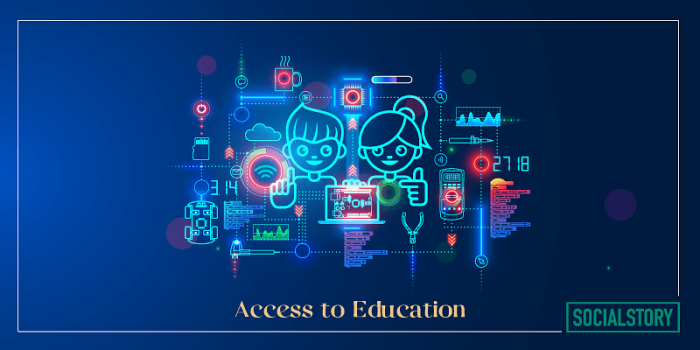Will Women helm the Fourth Industrial Revolution (4IR)?
- Technology Workforce
- 0 Replies
Every momentous shift in the way we live and work creates an unprecedented and irrevocable transformation that we often term as ‘revolutionary.’ Are we seeing the beginning of a fourth industrial revolution and the kind of a metamorphosis that we have never seen before? I believe so.
The Fourth Industrial Revolution (4IR) is a term coined in 2016 by Klaus Schwab, Founder and Executive Chairman of the World Economic Forum (WEF). And the pandemic has brought it closer to use than ever before. It has changed us or rather impelled us to take stock of obsolete ways of doing business, running companies and exchanging creative energy. We are now learning to reconfigure our place in an increasingly borderless world where structured interactions in brick and mortar workplaces may be a thing of the past.
4IR is here
Technology will continue to actively shape the industrial revolution that is unfolding around us in real time and we no longer know where the digital world ends and the physical and biological worlds begin. We are way beyond the era of mechanised, electric powered or even automated mass production. The proliferation of Information Technology is old news because the digital revolution we are in the middle of is a constantly shapeshifting phenomenon. It is never static, and every day a new dimension is added to it.
We are now seeing complex ideas like Artificial Intelligence (AI), Robotics, the Internet of Things (IoT), Genetic Engineering, Quantum Computing, 3D Printing, and more being mainstreamed and incorporated in everyday life. This revolution is disrupting the systems, expanse and speed of work that we had become used to.
Women in the 4IR
Women, I believe, will play a major role in the 4IR and not just because the increasing demand for remote talent will create more opportunities for them. It is not an exaggeration that developing and developed economies thrive and become more productive when women work. Their incomes break cycles of poverty and boost social and gender equity. I recently read a report that if countries that are a part of The Organisation for Economic Co-operation and Development increase female employment rates to match those of Sweden, it would boost their GDP by over $6 trillion. As gender gaps continue to undermine our economic potential, India would do well to heed this suggestion. More women in positions of power are also good for the diversity, effectiveness and overall development of businesses.
Female employment in the pandemic
Still, it is a matter of great concern that the world over, the pandemic has led to a drop in female employment by 13 million from 2019 levels. Globally, in 2020, less than half (46.9%) of all women participated in the labour force. This is a decrease of almost 51% from 1990. Higher education may be more accessible to women now, but societal, patriarchal and cultural restrictions continue to impede their professional growth.
As recent as in 2018, over 104 economies still had laws preventing women from working in specific jobs, 59 economies around the world had no sexual harassment laws in the workplace, and in many economies, husbands could legally prevent their wives from working. Restricted choices, unpaid caregiving, lack of quality child care, inordinate stress levels while juggling home and work also impact career trajectories. In many societies, women struggle to gain access to something as basic as a mobile phone or Internet.
We must ensure that societies do not become even more unequal during our transition into a rapidly digitised world. According to the UNESCO Science Report 2021, women are still under-represented in fields such as computing, digital information technology, engineering, mathematics and physics. The report asks for vigorous efforts at government, academic and corporate levels to equalise this gender imbalance.
Continue reading: https://thecsrjournal.in/will-women-helm-the-4ir-fourth-industrial-revolution/
The Fourth Industrial Revolution (4IR) is a term coined in 2016 by Klaus Schwab, Founder and Executive Chairman of the World Economic Forum (WEF). And the pandemic has brought it closer to use than ever before. It has changed us or rather impelled us to take stock of obsolete ways of doing business, running companies and exchanging creative energy. We are now learning to reconfigure our place in an increasingly borderless world where structured interactions in brick and mortar workplaces may be a thing of the past.
4IR is here
Technology will continue to actively shape the industrial revolution that is unfolding around us in real time and we no longer know where the digital world ends and the physical and biological worlds begin. We are way beyond the era of mechanised, electric powered or even automated mass production. The proliferation of Information Technology is old news because the digital revolution we are in the middle of is a constantly shapeshifting phenomenon. It is never static, and every day a new dimension is added to it.
We are now seeing complex ideas like Artificial Intelligence (AI), Robotics, the Internet of Things (IoT), Genetic Engineering, Quantum Computing, 3D Printing, and more being mainstreamed and incorporated in everyday life. This revolution is disrupting the systems, expanse and speed of work that we had become used to.
Women in the 4IR
Women, I believe, will play a major role in the 4IR and not just because the increasing demand for remote talent will create more opportunities for them. It is not an exaggeration that developing and developed economies thrive and become more productive when women work. Their incomes break cycles of poverty and boost social and gender equity. I recently read a report that if countries that are a part of The Organisation for Economic Co-operation and Development increase female employment rates to match those of Sweden, it would boost their GDP by over $6 trillion. As gender gaps continue to undermine our economic potential, India would do well to heed this suggestion. More women in positions of power are also good for the diversity, effectiveness and overall development of businesses.
Female employment in the pandemic
Still, it is a matter of great concern that the world over, the pandemic has led to a drop in female employment by 13 million from 2019 levels. Globally, in 2020, less than half (46.9%) of all women participated in the labour force. This is a decrease of almost 51% from 1990. Higher education may be more accessible to women now, but societal, patriarchal and cultural restrictions continue to impede their professional growth.
As recent as in 2018, over 104 economies still had laws preventing women from working in specific jobs, 59 economies around the world had no sexual harassment laws in the workplace, and in many economies, husbands could legally prevent their wives from working. Restricted choices, unpaid caregiving, lack of quality child care, inordinate stress levels while juggling home and work also impact career trajectories. In many societies, women struggle to gain access to something as basic as a mobile phone or Internet.
We must ensure that societies do not become even more unequal during our transition into a rapidly digitised world. According to the UNESCO Science Report 2021, women are still under-represented in fields such as computing, digital information technology, engineering, mathematics and physics. The report asks for vigorous efforts at government, academic and corporate levels to equalise this gender imbalance.
Continue reading: https://thecsrjournal.in/will-women-helm-the-4ir-fourth-industrial-revolution/






















